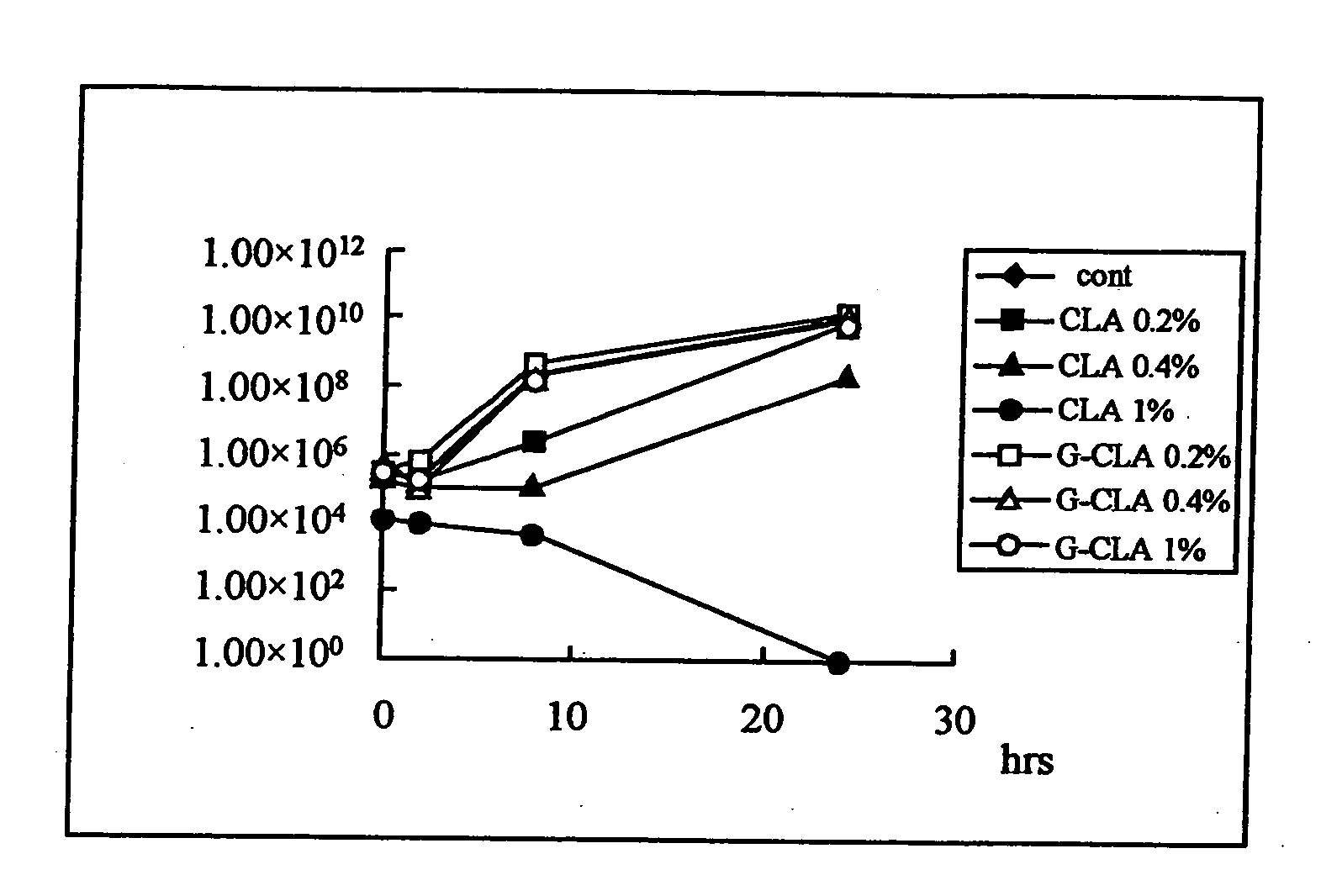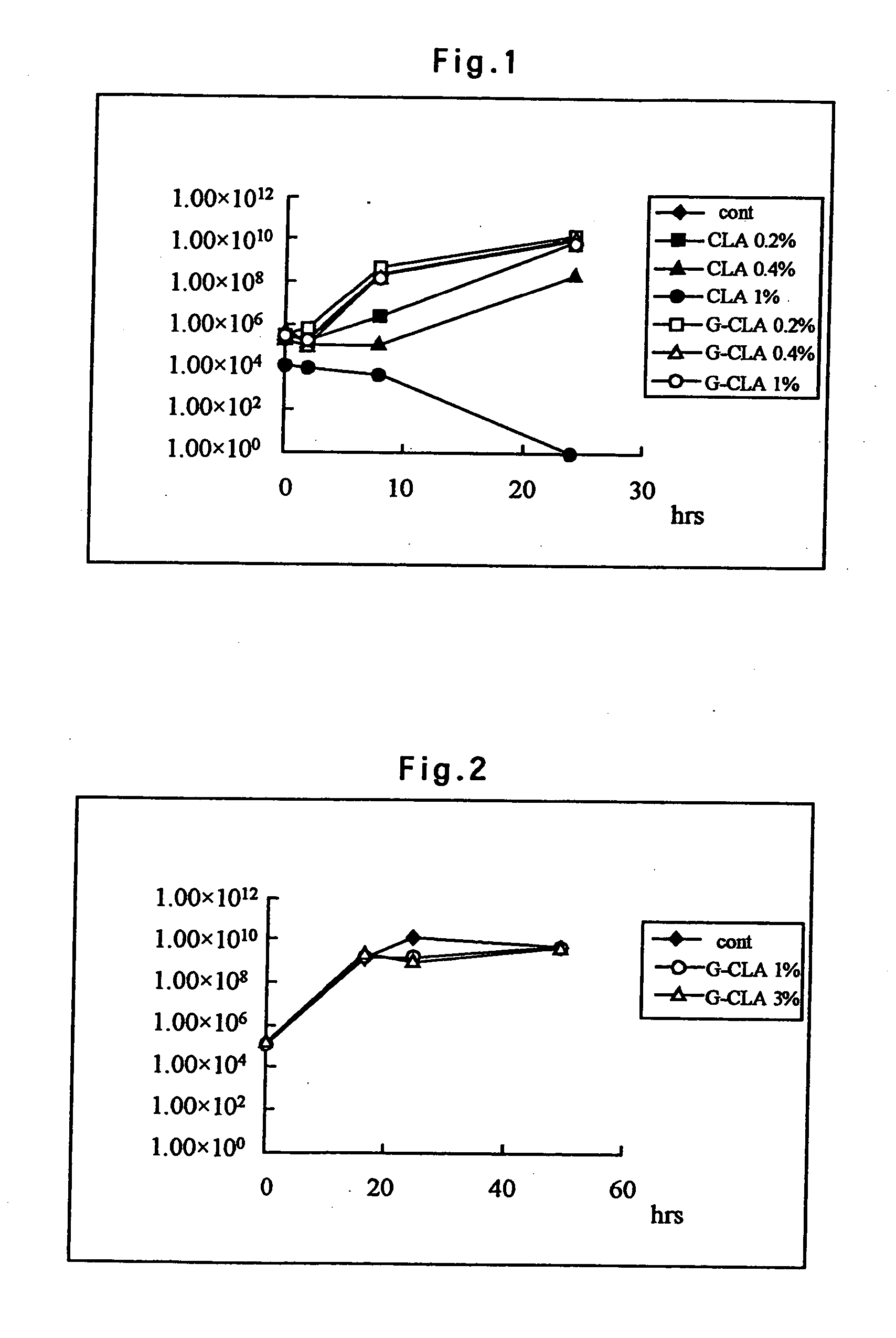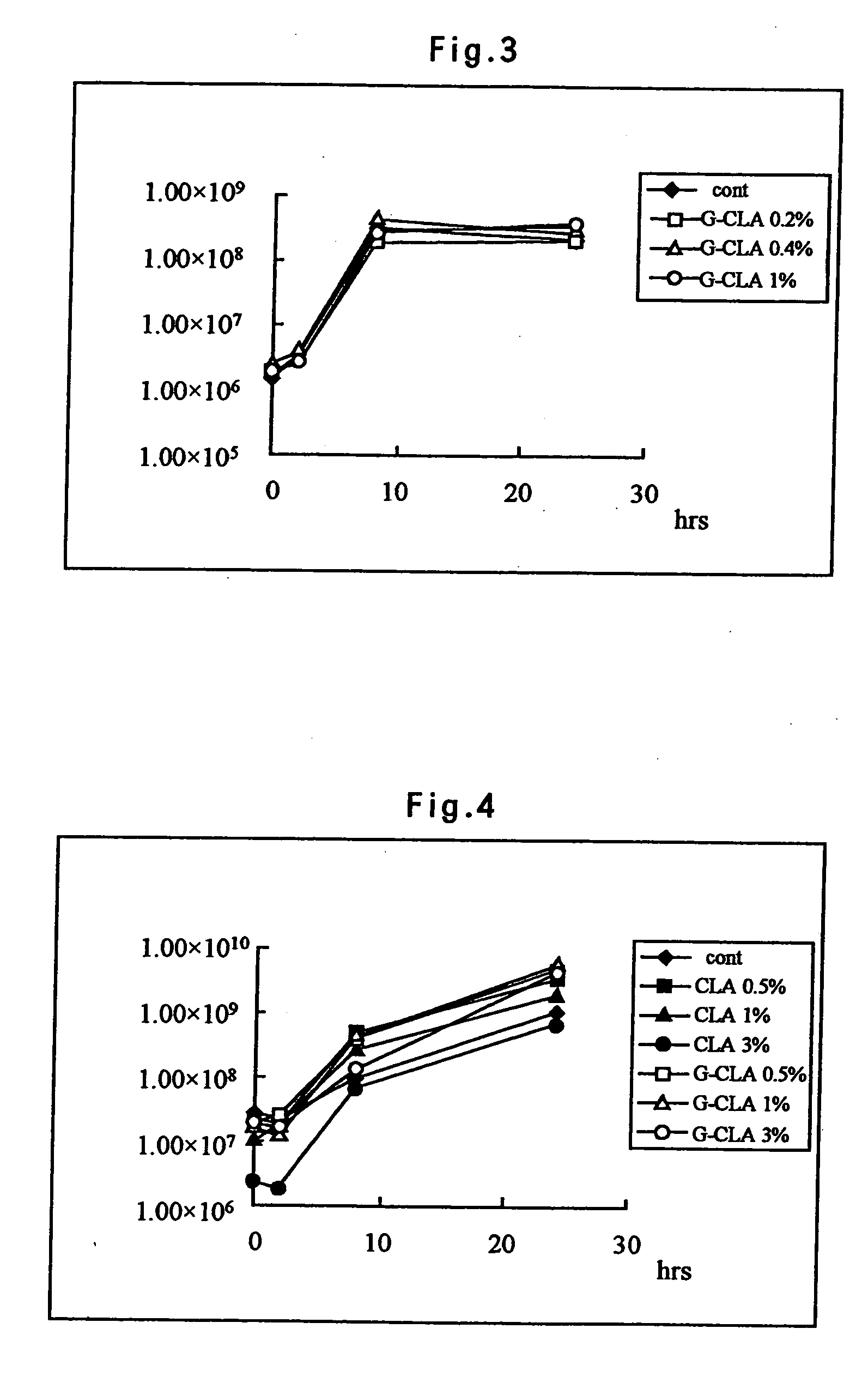Fermented foods and process for producing the same
a technology for fermented foods and process, applied in the field of fermented foods, can solve the problems of total death of bacterium, decrease in the number of live bacteria, delay in fermentation,
- Summary
- Abstract
- Description
- Claims
- Application Information
AI Technical Summary
Benefits of technology
Problems solved by technology
Method used
Image
Examples
production example 1
Production of Conjugated Fatty Acid Glyceride
[0031] A conjugated fatty acid glyceride was prepared by the following procedure:
[0032] (1) 75 g of CLA 80 Active Linol (manufactured by Rinoru Oil Mills Co., Ltd.), 8.2 g of Glycerol (analytical reagent grade, manufactured by Wako Pure Chemicals Industries, Ltd.), and 11.25 g of Lipozyme IM (manufactured by Novo Nordisk Ltd.) were weighed and placed in Kjeldahl flask.
[0033] (2) The mixture was esterified for 11 hours while evaporating in a rotary evaporator at a reduced pressure and stirring at about 70° C.
[0034] (3) The reaction product was filtered to remove Lipozyme IM and obtain conjugated linoleic acid glyceride (G-CLA).
[0035] When amount of the G-CLA)in the resulting reaction solution was confirmed by thin layer chromatography and iodine color development, 73.3% was triglyceride and the remainder was di- or monoglycerides.
example 1
Fermented Dairy Food 1
[0036] Fresh raw milk was centrifuged for cream separation to prepare skim milk, and G-CLA prepared in Production Example 1 was added to the thus produced skim milk at an amount of 0.2, 0.4, and 1.0%, respectively, to obtain three sorts of mediums. After homogenization, and serialization at 100° C. for 10 minutes, 0.1% of Streptococcus thermophilus YIT 2001 strain (FERM BP-7538) was inoculated to each of the mediums, and the mediums were cultivated at 37° C. for 24 hours.
[0037] In a similar manner, sterilized milk mediums having added thereto 1.0 and 3.0% of G-CLA, respectively, were inoculated with 0.1% of Lactobacillus casei YIT 9029 strain (FERM BP-1366), respectively, and the milk mediums were cultivated at 37° C. for 50 hours. As a control, a similar procedure was carried out by adding 3.0% of butter oil instead of G-CLA.
example 2
Fermented Dairy Food 2
[0040] 20% skim milk solution was sterilized by UHT sterilization to obtain two identical mediums. 0.1% Lactobacillus casei YIT 9029 for one of the mediums and 0.1% Streptococcus thermophilus YIT 2001 for other of the mediums were inoculated, respectively. After cultivating at 37° C. for 16 hours, each of the culture mediums was homogenized, and 63 parts by weight of each culture medium was mixed with 37 parts by weight of a syrup (12% high fructose glicose liquid sugar solution) to produce a fermented milk. To each resulting fermented milk was added G-CLA prepared in Producton Example 1 at an amount of 1.0, 3.0, and 5.0%, respectively, and each mixture was cooled to 10° C.
PUM
 Login to View More
Login to View More Abstract
Description
Claims
Application Information
 Login to View More
Login to View More - R&D
- Intellectual Property
- Life Sciences
- Materials
- Tech Scout
- Unparalleled Data Quality
- Higher Quality Content
- 60% Fewer Hallucinations
Browse by: Latest US Patents, China's latest patents, Technical Efficacy Thesaurus, Application Domain, Technology Topic, Popular Technical Reports.
© 2025 PatSnap. All rights reserved.Legal|Privacy policy|Modern Slavery Act Transparency Statement|Sitemap|About US| Contact US: help@patsnap.com



